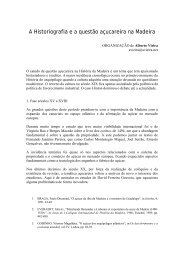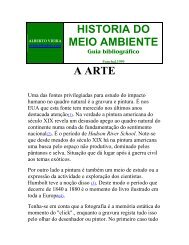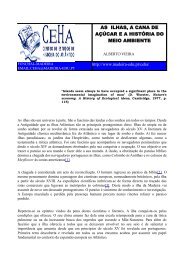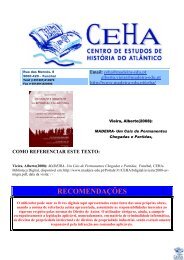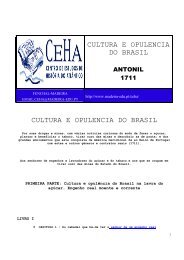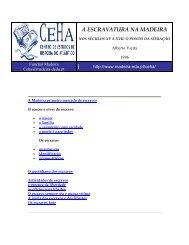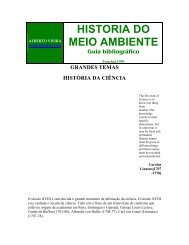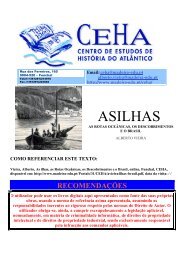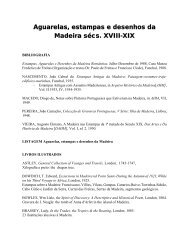SLAVERY IN MADEIRA
SLAVERY IN MADEIRA
SLAVERY IN MADEIRA
Create successful ePaper yourself
Turn your PDF publications into a flip-book with our unique Google optimized e-Paper software.
Theft was one of the aspects associated to the condition of slave. Slave is many times<br />
synonymous of thief and criminal. But the first was more associated to his quotidian. This<br />
practice would have been so generalised in the XVI-century, that the Count of Linhares<br />
did not hesitate in affirming that, he would never punish a slave for theft, as " while he<br />
was captive, nothing else did he wish, but to steal". To combat this appetency of the slave<br />
to steal, a by-law was established in 1546, to forbid concubinage with the free, namely<br />
the worker, as it was said, they would steal from their lords to give to their partners, or to<br />
get liberation. In Madeira, the thefts referenced fell upon objects or goods of little value,<br />
like clothes, fowls, cattle and some farm produce (wine, sugar cane and fruits).<br />
The greater danger for society resided in the criminality, more accentuated among the<br />
fugitives. Giulio Landi, who was in Madeira during the first half of the XVI-century,<br />
establishes a differentiation between the Moors and the Negroes, while the first are<br />
referenced as criminals and given to escape, the second ones are "good and loyal". In<br />
relation to the characteristics that define the first group he refers: " and it is not strange<br />
that they hardly support slavery, as they were free at first, but when they are made war<br />
prisoners, they are reduced to slavery and are chained". The chains were then inseparable<br />
companions only for the Moors, as for the Negroes they would only be in the case of<br />
crime. In 1687 Hans Sloane is peremptory: only a gold coin in the hands of a Negro was<br />
"sufficient to buy anybody's life".<br />
The ordinances and by-laws, by the restrictive measures they established to the social life<br />
of the slaves, suggest that: the limitations of use or transport of any weapon, the curfew<br />
after the sound of the alarm and the prohibition of isolated circulation without an order<br />
from the owner, give account of the fear.<br />
One of the forms of justice exercised by the owners was the denying of the possibility of<br />
liberation or the export. Good behaviour was synonymous many times, of later<br />
emancipation by Death of the proprietor, but bad behaviour meant an unpleasant future<br />
for the slave.<br />
In the application of the penalties, to the violations committed by the slaves, it is<br />
necessary to take into account the position assumed by the owners, once some infractions<br />
could be ruinous to them. The owner was responsible for all the damages caused and the<br />
payment of the pecuniary penalties. On the other hand, the banishment or Death became<br />
equally prejudicial for the owner, as it meant a double loss. The lord would loose the<br />
value paid in the purchasing of the slave, and would also loose its services. That is why<br />
we do not understand the attitude of Joao Rodrigues Castelhano, in approving the penalty<br />
by hanging of five of his slaves that had killed the steward. Different was the attitude of<br />
Diogo Leitao that preferred to pay five thousand reis for regal forgiveness when he saw<br />
himself deprived of his slave, Diogo, exiled to Cabo Verde for having wounded a man, as<br />
he refers "nothing would have served the fact that I brought him up since small and had<br />
spent much of his fazm".<br />
7. THE CHURCH OF THE SLAVES AND OF THE FREEDMEN




